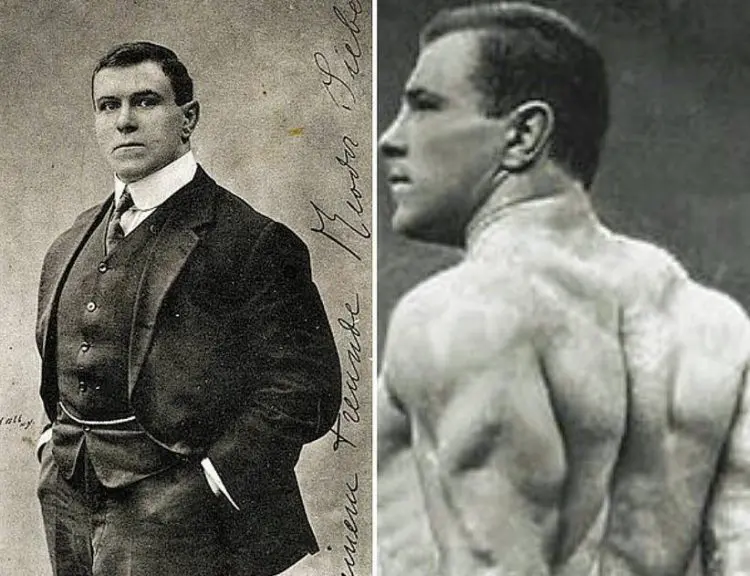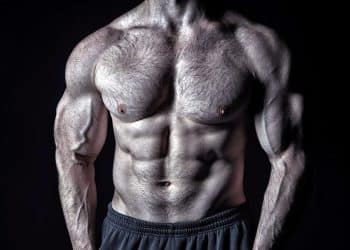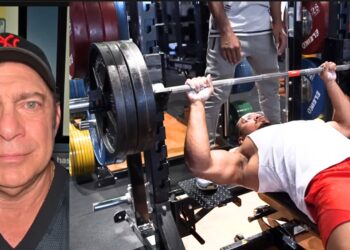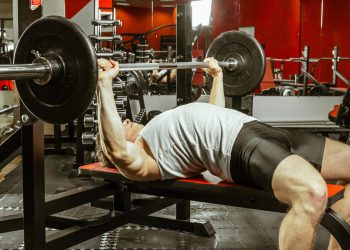The bench press is an exercise that gym bros everywhere perform every Monday. Bench pressing has been part of exercise programs for as long as they’ve existed. But let’s start with the origins of this exercise. By having an understanding of the history we can understand how to make the bench press or all pressing work better for you.
In Greco-Roman times, the push-up was a staple for developing upper body strength. Then in 1899, George Hackenschmidt performed the first floor press. It wasn’t until the 1920s that the bench press was being performed. Now, almost every athlete and gym bro does some kind of press, one to three times a week.

Undoubtedly, the bench press and pressing movements are an essential part of any exercise program. Below we will break down the variations of pressing exercises and how to manipulate them to fit your goals. We will also take a look into accessory movements that will help develop the supporting muscles to your pressing exercises.
The Push-Up
Back in Greco-Roman times, it wasn’t uncommon for exercise routines to include push-ups to build up the chest muscles.
- Start by laying on the floor face down with your hands placed under your shoulders.
- Squeeze your back tight. This is crucial because it will keep you in good posture.
- Lower yourself down to the floor, touching your chest to the floor.
- Repeat.
To manipulate the push-up to work your chest more, spread your hands out further apart, to work your triceps more, and bring your hands in more. By bringing your hands in closer, you will be protecting your elbows and shoulders more, but working your chest less. You will see this trend continue as we progress through the different pressing variations.
Read also, 13 Next Level Push-Up Variations For Mass, Strength, and Performance
Level Up Your Fitness: Join our 💪 strong community in Fitness Volt Newsletter. Get daily inspiration, expert-backed workouts, nutrition tips, the latest in strength sports, and the support you need to reach your goals. Subscribe for free!
The Floor Press
After the push-up, the next logical progression is to flip over and start to press weights off of your chest. What’s amazing about this pressing variation is that you are protecting your elbows and shoulders. By limiting the range of motion, it protects the elbow and shoulder. The nice part is if you do this exercise with the straight-leg variation, you get great isolation on your pressing muscles. Bend your knee and allow for some arch in your back and you have a total body power exercise.
The straight leg variation:
- Lay down on the floor with the weight at the bottom of a squat rack. Lay down with the bar at eye height.
- Grip the bar from underneath using either a hook or traditional grip.
- Squeeze the back tight by bringing the shoulders together. This tension will protect your back and increase chest activation by stabilizing the bar.
- Press bring the bar below the nipple line and press upward ending with arms extending about at shoulder height.
Read also: How To Do The Floor Press For A Bigger Bench
Bent Knee Variation:
- Start by laying down with the bar placed close to your feet.
- Grip the bar with a traditional or hook grip.
- Roll the bar to your hip position.
- Perform a glute bridge while pressing the bar to bring arms to full extension.
- Maintain the bridge position. Keep tension in your back.
- Press the bar the same as you do in the straight leg variation.
Depending on your goals, you can manipulate this exercise to suit your needs. Similar to the push-up, the closer your hands are together the more you are working on your triceps. The further your hands are apart, the more you are isolating your chest. If your goal is more towards power or performance you can do the bent knee variation where if you are looking to build your chest up more the straight leg variation will work for you.
If you have elbow or shoulder issues, consider using this exercise as your primary pressing movement. If you are doing bench press, this movement is a great accessory and will assist with your lockout power.
The Bench Press
We finally made it off the floor. There are so many variables when it comes to the bench press to ensure that you are getting everything that you are looking for out of it. Let’s start with the feet. The way that you engage your feet during your bench press will determine if the bench press is going to be more of a chest exercise, or a total body power movement.
1. Your feet: If you are looking to move as much weight as possible with the least amount of effort, or if you are a powerlifter, you will dig your feet into the ground and firmly press your weight through your feet to increase your calf, glute, and hamstring engagement. Engage your lower body as much as possible to maintain stability and hip drive. You do this by placing your feet slightly behind your knees, squeezing your glutes tight, and pressing your glutes on the bench.
2. Your hands: Come from underneath the bar to grip the bar. Grab the bar with your hands using your thumb with a hook grip or traditional grip.
3. Your head: Having your head position in the correct place will help ensure that the other parts of your movement work. It is important that after you grip the bar you look to make sure that your head is placed with your eyes directly under the bar.
Level Up Your Fitness: Join our 💪 strong community in Fitness Volt Newsletter. Get daily inspiration, expert-backed workouts, nutrition tips, the latest in strength sports, and the support you need to reach your goals. Subscribe for free!
4. Your back: Pull your chest up to the bar, then push your body down from the bar, to bring your back down towards the bench. This movement will create tension in your upper back. By creating tension in your back you will get better lat activation which is significant for bar stability.
5. Your movement: Bring the bar down to your chest, increasing the tension in your back by pulling the bar down. Then once you have lowered the bar to your chest, press in an arcing motion where the bar is slightly below your nipples at the bottom of the movement and the bar is above the shoulder at the top of the movement. The bar path for power is going to incorporate a bit of an arch, which will engage the anterior deltoid.
However, if you are looking for more aesthetic results, you will need to set up and perform the movement differently.
1. Your legs: The leg drive that is established when we bench for power we will look to decrease. If you are looking to bench press exclusively to build your chest, you will want to isolate your chest as much as possible. Thus, pressing through your feet is going to work against your goals.
2. Your Arms: Bring your elbows out wider. Still make sure to keep your elbows inside of your wrists.
3. Your movement: Bring the bar to your chest and press. When working for aesthetics make sure to perform a slower movement. Beyond that, you will also look to keep the bar on a straighter path to limit the amount of shoulder activation that you have. By changing the bar path and hand position you are going to focus it much more on your chest.
All general training principles still apply. You should make sure to keep your core tight by taking a bracing breath and flexing the abdominals. You will want back tension which you will establish by squeezing your shoulder blades together. Keeping these muscles tight and stable allows you to activate the chest muscle to its full capacity. When you are not stable unwanted muscles will activate.
Beyond The Bench
Here are accessory movements that will help customize your pressing workouts.
Shoulder Press
If your goal is sports performance, you should move on the standing shoulder press. The standing shoulder press can be performed with nearly any piece of equipment. It will engage your entire body with a greater focus on the shoulders. Simply standing upright and pressing the weight from shoulder height to full extension.
Standing Fly
If your goal is aesthetics, one of my favorite chest exercises is the standing fly for the amazing engagement in the upper pec. Standing upright with your hands on your shoulders and bringing them to the midline of your body at shoulder height.
If your goal is power, incorporating a floor press is a great exercise that translates well to the bench.
Regardless of your goal, you are certainly going to perform pressing movements. How you do them should be congruent with your goals. That you are not just looking to press the weight but you are paying attention to your setup, and that you are getting exactly what you are looking for from the movement.
The Bottom Line
Pressing has been a crucial part of exercise routines for as long as there have been exercise routines. Change the way you bench press to ensure you hit your goals. Greater lower body activation will increase the power benefit while more chest isolation will work better for aesthetics.
Bringing your hands in more will work your triceps more and further out will work your chest more. By tweaking the way you bench press you will get the most out of the work you do.








